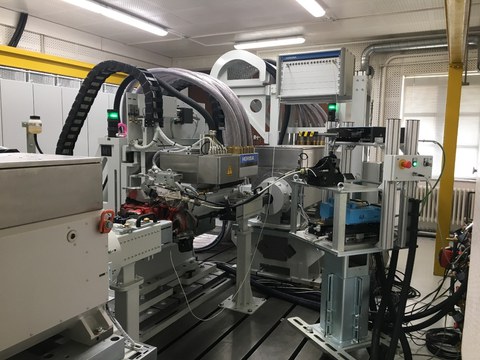May 21, 2021
Cooperation and joint further development of methods for virtual complete vehicle validation with IPG Automotive GmbH

Powertrain test bench at the Chair of Automobile Engineering
The increasing complexity of today's vehicle technologies requires the further development of existing methods for the design and validation of technologies and functions. Only in this way can the associated increasing time and cost pressure in vehicle development be countered in the long term. Especially the growing functional networking of components and assemblies up to the networking of vehicles with the environment and traffic, require a growing integration of intelligent and functional simulation and measurement technology tools in the vehicle development process. Here, virtual methods and tools have been showing themselves for some time as essentially promising approaches. The weak points as well as the demands here are in the area of correlation, regardless of whether the area road-to-rig or even road-to-desktop is addressed.
In this environment, a cooperation with IPG Automotive GmbH was recently concluded. IPG Automotive, based in Karlsruhe, is one of the leading suppliers of software solutions for complete vehicle simulation (CarMaker product family) and also develops solutions for hardware-in-the-loop simulation (HiL) on test systems.
Together with IPG Automotive, test benches are upgraded to hardware-in-the-loop systems. Here, the continuous parameterisation road of the Chair of Automobile Engineering at the TU Dresden proves to be particularly target-oriented, as it is aligned with the vehicle development process. A core component of the cooperation extensions is the real-time computer system of IPG Automotive, the so-called Xpack4 system. On this system, the methods and vehicle simulation models generated at the chair can be jointly analysed, optimised and validated in interaction with a real test specimen. In this way, novel test methods and approaches can be developed in the future to help solve challenges such as safeguarding functions of autonomous driving or software updates over-the-air (OTA). But also the functional interactions, for example those between driver models and driving dynamics/comfort of a vehicle, can be effectively secured at system level in the frontloading process.
